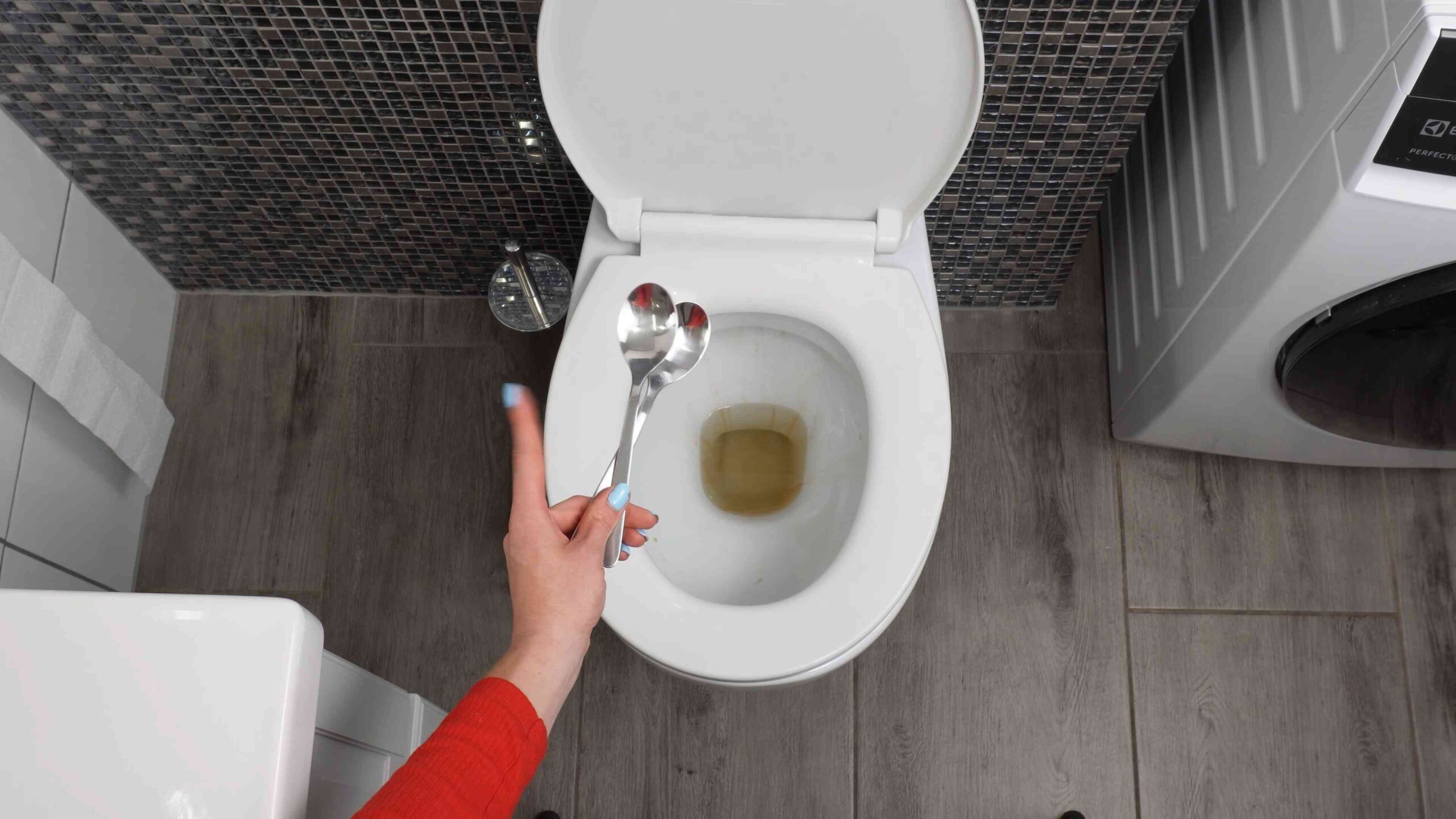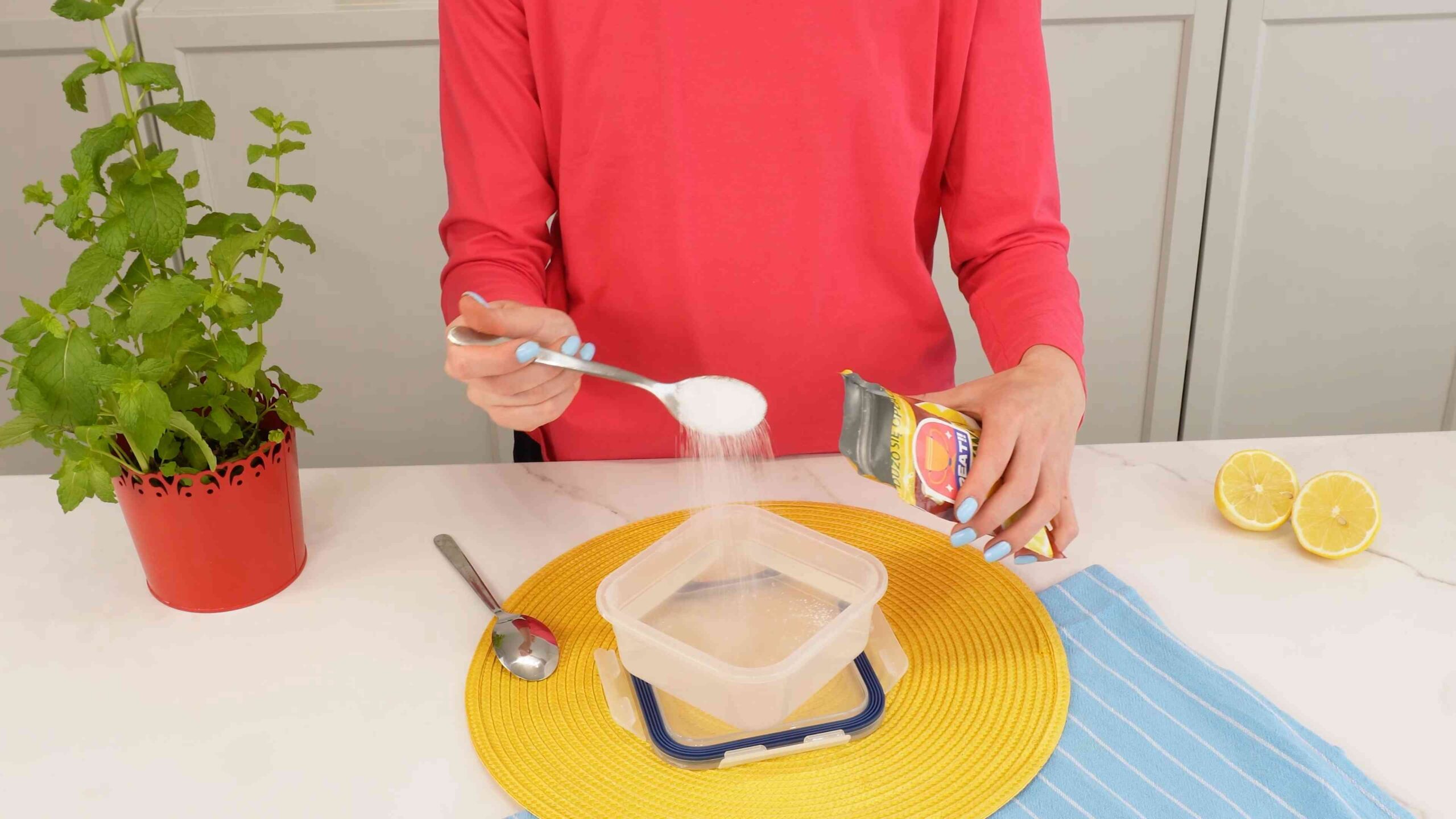Toilet limescale removal can feel like a never-ending battle, right? I know the frustration of scrubbing and scrubbing, only to see those stubborn stains reappear. But what if I told you that you could conquer limescale with simple, DIY solutions, saving you time, money, and a whole lot of elbow grease?
For generations, homeowners have grappled with the challenges of hard water and its unwelcome byproduct: limescale. From ancient Roman aqueducts to modern plumbing systems, the buildup of mineral deposits has been a persistent issue. While harsh chemicals were often the go-to solution, many are now seeking gentler, more eco-friendly methods. That’s where these DIY tricks come in!
Let’s face it, nobody enjoys cleaning the toilet. But beyond aesthetics, limescale can actually damage your toilet over time, affecting its flushing efficiency and even leading to costly repairs. That’s why mastering effective toilet limescale removal techniques is so important. In this article, I’m going to share my favorite, tried-and-true DIY hacks that will leave your toilet sparkling clean and your wallet a little heavier. Get ready to say goodbye to stubborn stains and hello to a fresh, clean bathroom!

DIY Toilet Limescale Removal: A Sparkling Clean Throne Awaits!
Okay, let’s face it, nobody enjoys cleaning the toilet. But that stubborn limescale buildup? It’s not just unsightly; it can actually affect the efficiency of your flush. But don’t worry, you don’t need harsh chemicals or expensive cleaners to tackle this problem. I’m going to share my tried-and-true DIY method for removing limescale, leaving your toilet bowl sparkling clean.
What You’ll Need:
Before we dive in, let’s gather our supplies. This is a pretty straightforward process, and you probably already have most of these items at home:
* White Vinegar: The star of the show! Its acidity breaks down the limescale.
* Baking Soda: This will create a fizzy reaction with the vinegar, helping to lift the limescale.
* Toilet Bowl Brush: For scrubbing, of course.
* Rubber Gloves: Protect your hands!
* Old Towels or Rags: For any spills or drips.
* Optional:
* Borax: For extra stubborn limescale.
* Pumice Stone: Use with caution for very tough deposits.
* Spray Bottle: For applying vinegar to specific areas.
* Toilet Plunger: If the limescale is affecting the flush.
The Limescale Removal Process: Step-by-Step
Here’s the breakdown of how we’re going to banish that limescale:
1. Prepare the Toilet:
* Put on your rubber gloves. Safety first!
* Flush the toilet to remove any loose debris.
* If there’s a lot of water in the bowl, you can try to remove some of it with a small cup or sponge. This will allow the vinegar mixture to be more concentrated.
2. Apply the Baking Soda:
* Pour about one cup of baking soda directly into the toilet bowl.
* Try to sprinkle it around the sides of the bowl, focusing on areas with heavy limescale buildup.
3. Add the Vinegar:
* Slowly pour about two cups of white vinegar into the bowl.
* You’ll immediately notice a fizzing reaction. This is exactly what we want! The baking soda and vinegar are working together to loosen the limescale.
4. Let it Sit (and Work its Magic!):
* This is the most crucial step: patience! Let the mixture sit for at least 2-4 hours, or even better, overnight. The longer it sits, the more effectively the vinegar will break down the limescale.
* If you’re dealing with really stubborn limescale, you can even repeat the baking soda and vinegar application after a few hours.
5. Scrub-a-dub-dub:
* After the soaking period, grab your toilet bowl brush and give the bowl a good scrub.
* Pay extra attention to the areas where you saw the most limescale buildup.
* The loosened limescale should come off fairly easily with a bit of scrubbing.
6. Flush and Inspect:
* Flush the toilet to rinse away the loosened limescale and the baking soda/vinegar mixture.
* Take a good look at the bowl. Are there still any stubborn spots? If so, proceed to the next step.
7. Tackling Stubborn Limescale (Optional):
* Borax Boost: If you have some borax on hand, sprinkle about 1/2 cup into the bowl and scrub again. Borax is a natural mineral that can help to further break down limescale.
* Pumice Stone Power: For really tough deposits, a pumice stone can be your best friend. However, use it with caution! Wet the pumice stone and gently rub it on the limescale. Avoid scrubbing too hard, as you could scratch the porcelain. Test in an inconspicuous area first.
* Vinegar Soak (Again!): If the limescale is still clinging on, try soaking the bowl with vinegar again overnight. Sometimes, a second soak is all it takes.
8. Final Flush and Shine:
* Once you’re satisfied with the results, give the toilet bowl a final flush.
* Wipe down the exterior of the toilet with a damp cloth and a mild cleaner.
Dealing with Limescale Under the Rim
The area under the rim of the toilet bowl can be a real hotspot for limescale buildup. It’s hard to reach and often gets neglected. Here’s how I tackle it:
1. Vinegar Spray:
* Fill a spray bottle with white vinegar.
* Carefully spray the vinegar under the rim, making sure to saturate the areas with limescale.
2. Soak and Scrub:
* Let the vinegar soak under the rim for at least 30 minutes (or longer for heavy buildup).
* Use a small brush (an old toothbrush works great!) or a limescale removal tool specifically designed for under the rim to scrub away the loosened limescale.
3. Flush and Repeat:
* Flush the toilet to rinse away the vinegar and limescale.
* Repeat the process if necessary.
Preventing Future Limescale Buildup
The best way to deal with limescale is to prevent it from forming in the first place. Here are a few tips:
* Regular Cleaning: Clean your toilet bowl at least once a week with a toilet bowl cleaner or a vinegar solution.
* Vinegar Flushes: Pour a cup of white vinegar into the toilet bowl once a week and let it sit overnight. This will help to prevent limescale from building up.
* Water Softener: If you have hard water, consider installing a water softener. This will reduce the mineral content of your water, which is the main cause of limescale.
* Toilet Bowl Tablets: Use toilet bowl tablets that contain limescale inhibitors. These tablets will slowly release chemicals that help to prevent limescale from forming.
A Word of Caution About Pumice Stones
While pumice stones can be effective for removing stubborn limescale, it’s important to use them with caution. Here’s why:
* Scratching: Pumice stones are abrasive and can scratch the porcelain of your toilet bowl if you scrub too hard.
* Testing: Always test the pumice stone in an inconspicuous area of the toilet bowl before using it on the entire surface.
* Lubrication: Make sure the pumice stone and the toilet bowl surface are both wet before scrubbing. This will help to reduce the risk of scratching.
* Gentle Pressure: Use gentle pressure when scrubbing with a pumice stone. Let the stone do the work, and avoid pressing down too hard.
Why This Method Works
The effectiveness of this DIY method lies in the chemical reaction between baking soda and vinegar. Vinegar, being an acid, reacts with the alkaline baking soda to produce carbon dioxide gas. This fizzing action helps to lift the limescale from the surface of the toilet bowl. The vinegar also works to dissolve the mineral deposits that make up the limescale.
Alternative Cleaning Solutions
While I swear by the vinegar and baking soda method, here are a few other options you can try:
* Lemon Juice: The citric acid in lemon juice can also help to break down limescale. Simply pour lemon juice into the toilet bowl and let it sit for a few hours before scrubbing.
* Cola: Believe it or not, the phosphoric acid in cola can also help to remove limescale. Pour a can of cola into the toilet bowl and let it sit overnight before flushing.
* Commercial Limescale Removers: If you prefer to use a commercial limescale remover, be sure to follow the instructions on the product label carefully.
Important Safety Tips
* Ventilation: Make sure the bathroom is well-ventilated when using vinegar or other cleaning products.
* Mixing Chemicals: Never mix vinegar with bleach or other harsh chemicals. This can create dangerous fumes.
* Protective Gear: Wear rubber gloves to protect your hands from the cleaning solutions.
* Eye Protection: Consider wearing eye protection to prevent splashes from getting into your eyes.
* Children and Pets: Keep children and pets away from the toilet while you’re cleaning it.
Troubleshooting Common Problems
* Limescale Not Budging: If the limescale is extremely stubborn, try repeating the soaking and scrubbing process multiple times. You can also try using a stronger cleaning solution, such as a commercial limescale remover.
* Toilet Bowl Staining: If the toilet bowl is stained, you can try using a toilet bowl cleaner that contains bleach. Be sure to follow the instructions on the product label carefully.
* Slow Flushing: If the toilet is flushing

Conclusion
So, there you have it! Conquering stubborn toilet limescale doesn’t require harsh chemicals or expensive professional services. This simple, DIY trick, using readily available household ingredients, offers a powerful and effective solution for restoring your toilet bowl to its sparkling best. We’ve shown you how to create a potent, yet gentle, limescale remover that’s not only budget-friendly but also kinder to the environment.
Why is this DIY method a must-try? Because it works! It’s a proven way to tackle even the most persistent limescale buildup, leaving your toilet bowl clean, fresh, and hygienic. Forget spending hours scrubbing with ineffective cleaners. This method allows the solution to do the hard work for you, dissolving the limescale and making it easy to wipe away. Plus, you’ll avoid the unpleasant fumes and potential health hazards associated with many commercial limescale removers.
But the beauty of this DIY approach lies in its adaptability. Feel free to experiment with variations to suit your specific needs and preferences. For instance, if you’re dealing with particularly tough limescale, you can increase the concentration of vinegar or let the solution soak for a longer period. You could also add a few drops of your favorite essential oil, like lemon or tea tree, for an extra boost of freshness and antibacterial properties. Another variation involves using baking soda paste for targeted scrubbing after the initial soak, providing an extra layer of abrasive cleaning power. Remember to always test any new additions in an inconspicuous area first.
This DIY toilet limescale removal method is more than just a cleaning hack; it’s a way to take control of your cleaning routine, save money, and protect the environment. It’s a win-win-win!
We’re confident that once you try this method, you’ll be amazed by the results. Say goodbye to unsightly limescale and hello to a sparkling clean toilet bowl. Don’t just take our word for it, though. We encourage you to give this DIY trick a try and see the difference for yourself.
And most importantly, we want to hear about your experience! Share your results, tips, and variations in the comments below. Let us know what worked best for you and any modifications you made to the recipe. Your feedback will not only help other readers but also contribute to a community of DIY cleaning enthusiasts. Together, we can conquer limescale and keep our bathrooms sparkling clean, one toilet bowl at a time! So, grab your vinegar, baking soda, and a little elbow grease, and get ready to transform your toilet!
Frequently Asked Questions (FAQs)
What exactly is limescale, and why does it form in my toilet?
Limescale is a hard, chalky deposit that forms when hard water evaporates, leaving behind dissolved minerals like calcium and magnesium. In toilets, limescale typically appears as a ring around the waterline or as crusty deposits on the bowl’s surface. Hard water is the primary culprit, but the frequency of toilet use and the effectiveness of your flushing system can also contribute to limescale buildup. Ignoring limescale can lead to unsightly stains, reduced flushing efficiency, and even damage to your toilet’s internal components over time.
How often should I use this DIY toilet limescale removal method?
The frequency depends on the hardness of your water and how quickly limescale builds up in your toilet. As a general guideline, we recommend using this method every 1-3 months for preventative maintenance. If you notice significant limescale buildup, you may need to use it more frequently. Regular cleaning will prevent limescale from becoming too stubborn and difficult to remove.
Is vinegar safe to use on all types of toilet bowls?
Vinegar is generally safe for most toilet bowls, including porcelain and ceramic. However, it’s always a good idea to test it in an inconspicuous area first, especially if you have an older or more delicate toilet bowl. Avoid using vinegar on toilet bowls made of natural stone, such as marble, as it can etch the surface. If you’re unsure about your toilet bowl’s material, consult the manufacturer’s instructions or contact a plumbing professional.
Can I use other types of vinegar besides white vinegar?
While white vinegar is the most effective and readily available option, you can experiment with other types of vinegar, such as apple cider vinegar. However, keep in mind that other types of vinegar may not be as acidic as white vinegar and may not be as effective at dissolving limescale. Also, colored vinegars might stain lighter-colored toilet bowls, so proceed with caution.
What if the limescale is extremely stubborn and doesn’t come off easily?
For extremely stubborn limescale, you can try a few things. First, increase the concentration of vinegar in the solution. Second, extend the soaking time to several hours or even overnight. Third, after soaking, use a pumice stone or a toilet brush with stiff bristles to gently scrub the limescale. Be careful not to scratch the toilet bowl’s surface. Finally, you can try creating a paste of baking soda and water and applying it directly to the limescale, letting it sit for a while before scrubbing.
Will this DIY method harm my septic system?
Vinegar and baking soda are generally considered safe for septic systems when used in moderation. However, avoid using excessive amounts of these ingredients, as they can disrupt the balance of bacteria in your septic tank. If you have concerns about your septic system, consult a plumbing professional or septic system specialist.
Can I use bleach instead of vinegar for toilet limescale removal?
While bleach can kill bacteria and disinfect your toilet bowl, it’s not as effective at dissolving limescale as vinegar. Additionally, mixing bleach with other cleaning products, such as vinegar or ammonia, can create dangerous fumes. We strongly advise against using bleach for limescale removal and recommend sticking to safer and more effective alternatives like vinegar and baking soda.
How can I prevent limescale from building up in my toilet in the future?
Preventing limescale buildup is easier than removing it. Here are a few tips:
* Flush your toilet regularly, even if it’s not being used.
* Consider installing a water softener to reduce the mineral content of your water.
* Use a toilet bowl cleaner with limescale-inhibiting properties regularly.
* Periodically clean your toilet bowl with vinegar or baking soda as a preventative measure.
* Ensure your toilet is flushing efficiently to prevent water from sitting in the bowl for extended periods.
What safety precautions should I take when using this DIY method?
While vinegar and baking soda are relatively safe, it’s always a good idea to take some basic safety precautions. Wear gloves to protect your hands from irritation. Avoid getting the solution in your eyes. Ensure adequate ventilation in the bathroom. And never mix vinegar with bleach or other cleaning products, as this can create dangerous fumes. If you experience any irritation or discomfort, discontinue use and consult a medical professional.
Can I use this method to clean other bathroom fixtures besides the toilet?
Yes, you can use a diluted version of this method to clean other bathroom fixtures affected by limescale, such as showerheads, faucets, and sinks. However, always test the solution in an inconspicuous area first to ensure it doesn’t damage the surface. Avoid using abrasive scrubbers on delicate surfaces. Remember that this method is primarily designed for toilet limescale removal, so adjust the concentration and application accordingly for other fixtures.





Leave a Comment